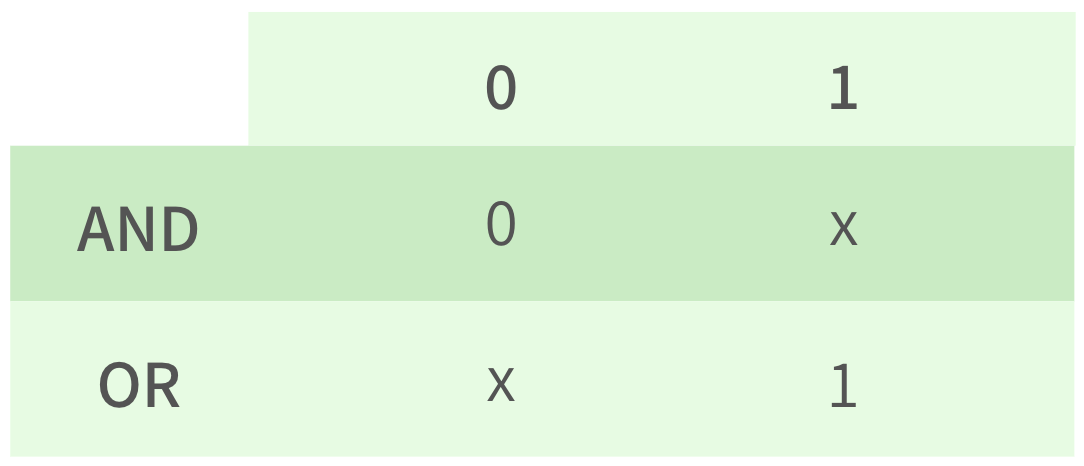What happens when you have a number x and you want to AND or OR it with a bit? It actually follows an interesting
pattern, shown in the table below. Take a moment to convince yourself that this table is correct.

Alright, so let's imagine we have four bytes of information and we want to change 3 bits.
How would we set the three rightmost bits to 101?

Okay, so it looks like we can set bits just be OR'ing them in. Right?
WRONG! What if the starting value isn't all zeroes?

That doesn't look quite right. If the existing bit is set to 1, using an OR won't change it
it stays at 1 (why? check the table above!). To set a bit, we OR it with 1 and to clear a bit, we AND it with 0 (see the table above!). In order to change a bit, we would first clear it, then set it.
We will AND with zeroes to "erase" the previous value, but we don't want to erase the whole number.
How do we do this?

We create a bitmask that selectively erases only the bits we want to change!
If a bit in our bitmask is set to 1, it will leave that bit alone. If our bitmask has a 0, though, it will erase the bit
when we AND our bitmask with the value.

Whoaa!! Looks like if we take our value, AND it with a bitmask, and then OR it with the number we want to plug in, we'll have inserted those bits without messing up any of the other bits.
The only issue: No one wants to write out unsigned int bitmask = 0b111111111111111111111111111111000; That's a lot of ones.
Instead, we can write ~0b111. The tilde (~) means take the number 0b111 and flip all the bits (all the trailing zeroes
turn to 1s, the three ones turn to 0s)! So ~0b111 is equivalent to 0b111111111111111111111111111111000.
Okay there's actually one more issue. What if we want to replace bits in the middle of a value? Well, we can shift our bits to the desired location. Look at the example bitmask below and figure out which bits are being changed.
// original bits of reg preserved, only 4 targeted bits will change
unsigned int reg = <...>;
reg &= ~(0b1111 << 5);
reg |= (0b1010 << 5);